Ghirza: Mausoleum North-B
Q69121906Ghirza: Roman town in Libya, one of the main archaeological sites of the country.
Ghirza: Mausoleum North-B
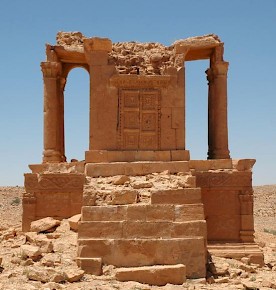
Ghirza's North Cemetery is about half a kilometer west of the center of the desert town. Unlike the tombs on the South Cemetery, which look like obelisks, the mausoleums of this cemetery resemble temples, comparable to the mausoleum of Qasr Banat. In Graeme Barker e.a., Farming the Desert. The UNESCO Libyan Valleys Archaeological Survey (1996), the North Cemetery of Ghira is known as Gh129.
This page deals with Mausoleum B, which was built in the second quarter of the fourth century CE. Like Mausoleum A, it is square, built on a hight platform, and resembles a temple.
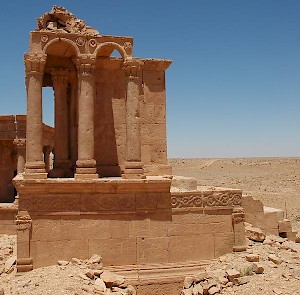
There used to be five Corinthian columns on each side; the arches - where one would have expected a straight architrave - betray an Alexandrine influence. Again, the entrance faces east, to the place where the sun rises and to the village where the dead used to live.
Mausoleum B was constructed by one Marchius Metusan for his mother Flavia Thesylgum and father Marchius Fydel (who had built Mausoleum A for his parents Marchius Nasif and Marchia). The name of the mother, Flavia Thesylgum, is interesting, because it suggests that her Libyan family was recognized as Roman by the emperor Constantine the Great (r.306-337), who belonged to the gens Flavia.
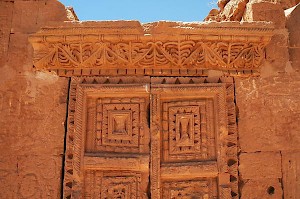
The facade had a false door and a splendid architrave. Both have parallels in Egyptian funerary architecture (in which the false door represents the gate to the afterlife) and make the tomb look like a little house. It is easy to understand why the Arabs and Berbers of the Middle Ages believe that Ghirza was a petrified city.
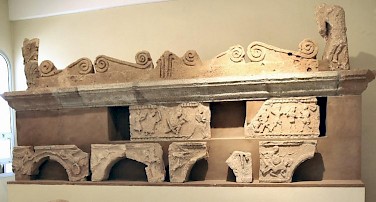
There were many reliefs. The ones on the photo to the right are now on display in the museum of Lepcis Magna. The small arches were south and north walls; the center and upper reliefs used to be above the entrance. In the center was a clan leader, sitting on a chair to receive a gift, with two attendants.
Below, you can see other reliefs, which can today be admired in the Museum of the Jamahirjia in Tripoli: hunting scenes that do not deny that the hunter can sometimes become the victim. One scene appears to be the capture of a slave, which tells something about the non-human status of these people.
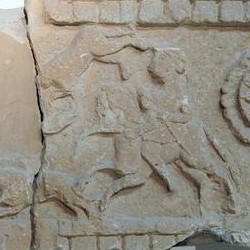 Ghirza, Mausoleum North B, relief: hunters |
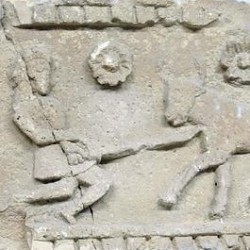 Ghirza, Mausoleum North B, relief: hunters |
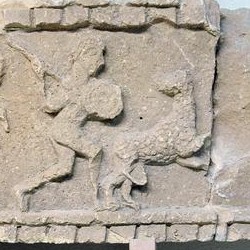 Ghirza, Mausoleum North B, relief: hunters |
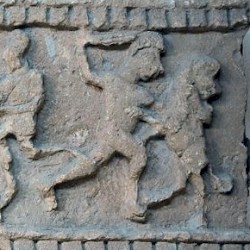 Ghirza, Mausoleum North B, relief: hunters |